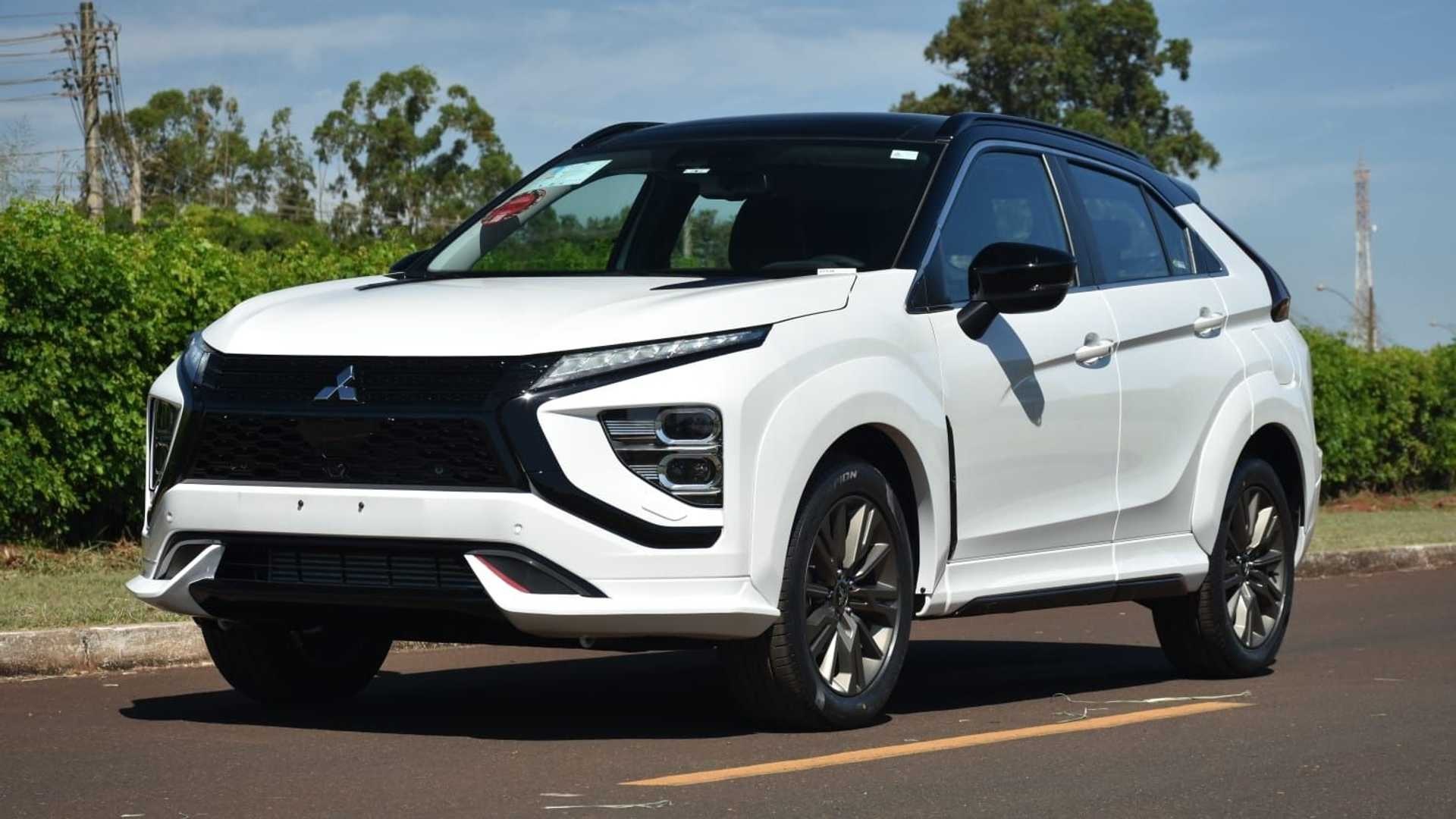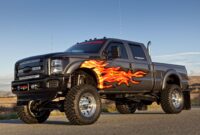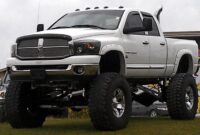Mitsubishi Pickup Truck: The Enduring Workhorse and Adventure Companion cars.truckstrend.com
For decades, the Mitsubishi pickup truck, known globally by names like L200, Triton, and Strada, has carved out a formidable reputation as a durable workhorse, a capable off-road adventurer, and a reliable family vehicle. Embodying Mitsubishi’s heritage of rugged engineering and innovative four-wheel-drive technology, these trucks have become a staple in diverse markets, from the bustling construction sites of Southeast Asia to the challenging terrains of the Australian outback and the demanding landscapes of Europe and Africa. More than just a vehicle, the Mitsubishi pickup truck represents a commitment to reliability, versatility, and performance, consistently delivering on its promise to tackle any task or terrain thrown its way.
The Legacy of Resilience: A History of Innovation and Durability
Mitsubishi Pickup Truck: The Enduring Workhorse and Adventure Companion
Mitsubishi’s journey in the pickup truck segment began in 1978 with the introduction of the Mitsubishi Forte, a compact pickup that quickly gained traction for its robust build. This pioneering model evolved into the globally recognized L200 (and later Triton/Strada), setting the stage for a lineage of vehicles celebrated for their longevity and capability. Each successive generation brought advancements in design, engine technology, safety features, and comfort, while steadfastly retaining the core values of durability and off-road prowess.
From its early days as a simple, no-frills utility vehicle, the Mitsubishi pickup has transformed into a sophisticated, yet still immensely capable, modern truck. It has adapted to changing consumer demands, offering more refined interiors, advanced infotainment systems, and a suite of active safety technologies, without compromising its fundamental character as a dependable work or adventure partner. This evolution underscores Mitsubishi’s understanding of the diverse roles its pickup trucks play in the lives of their owners.
Key Features and Capabilities: What Makes a Mitsubishi Pickup Stand Out?
The enduring appeal of the Mitsubishi pickup truck lies in its carefully engineered features, designed to deliver a balance of performance, utility, and comfort.
- Engine Options: The heart of most modern Mitsubishi pickups is the efficient 2.4-liter MIVEC turbodiesel engine. This powerplant is renowned for its strong torque delivery, crucial for hauling and off-road driving, while also offering competitive fuel efficiency. Older generations featured reliable 2.5-liter diesel engines. These engines are designed for longevity and demanding conditions, making them a favorite among those who need a truck for serious work.
- Drivetrain Superiority: Super Select 4WD-II: A hallmark of Mitsubishi pickups, especially in higher trims, is the Super Select 4WD-II system. This advanced full-time 4WD system allows drivers to seamlessly switch between 2WD, full-time 4WD (4H), part-time 4WD with locked center differential (4HLc), and low-range 4WD with locked center differential (4LLc) – even on the fly. Its unique ability to operate in 4WD on paved roads without drivetrain binding is a significant advantage, providing enhanced traction and safety in varying weather conditions. Complementary features like Hill Descent Control and Off-Road Mode (Gravel, Mud/Snow, Sand, Rock) further enhance its capabilities on challenging terrains. Entry-level models often feature the simpler Easy Select 4WD system.
- Robust Chassis and Suspension: Built on a tough ladder-frame chassis, Mitsubishi pickups are designed to withstand heavy loads and rough terrain. The suspension setup, typically independent double wishbone at the front and leaf springs at the rear, strikes a balance between load-carrying capacity and passenger comfort, a crucial aspect for those using the truck daily.
- Towing and Payload: With impressive towing capacities (often ranging from 2,700 kg to 3,500 kg, depending on market and configuration) and substantial payload ratings, these trucks are perfectly equipped for hauling trailers, boats, or heavy equipment, making them indispensable tools for tradespeople and adventurers alike.
- Safety and Technology: Modern Mitsubishi pickups are equipped with a comprehensive suite of safety features. Beyond standard airbags, ABS, and EBD, higher trims include advanced driver-assistance systems such as Forward Collision Mitigation (FCM), Blind Spot Warning (BSW) with Lane Change Assist (LCA), Rear Cross Traffic Alert (RCTA), and Multi Around Monitor (360-degree camera system), significantly enhancing safety and ease of driving. Interiors have also evolved, offering comfortable seating, intuitive infotainment systems with smartphone integration (Apple CarPlay/Android Auto), and practical storage solutions.

Models and Variants: Tailoring to Every Need
The Mitsubishi pickup truck range is designed to cater to a wide spectrum of needs and preferences, offering various configurations and trim levels.
- Naming Conventions: Globally, the truck is most commonly known as the L200 (Europe, Africa, Middle East) or Triton (Australia, New Zealand, Southeast Asia, South Africa). In the Philippines, it’s known as the Strada. Regardless of the name, they represent the same core vehicle.
- Cab Types:
- Single Cab: A two-seater, two-door configuration with the longest cargo bed, ideal for heavy-duty work and commercial applications where maximum load space is paramount.
- Club Cab (Extended Cab): A two-door variant with limited rear seating (often jump seats) and a slightly shorter bed than the single cab, offering a compromise between passenger space and cargo capacity.
- Double Cab: The most popular configuration, featuring four doors and seating for five, combined with a practical cargo bed. This variant appeals to families and those who use their truck for both work and lifestyle activities.
- Trim Levels: From the utilitarian GL or GLX models (designed as robust workhorses with essential features) to the more luxurious GLS, Exceed, or range-topping Athlete variants (offering premium comfort, advanced technology, and distinctive styling), there’s a Mitsubishi pickup to suit every budget and requirement. Higher trims often boast leather upholstery, larger alloy wheels, LED lighting, and more sophisticated infotainment systems.
Practical Ownership: Tips for Maintenance, Performance, and Longevity
Owning a Mitsubishi pickup truck is a rewarding experience, but maximizing its lifespan and performance requires proper care and attention.
- Regular Servicing is Key: Adhere strictly to the manufacturer’s recommended service schedule. Regular oil changes, filter replacements (oil, air, fuel, cabin), and fluid checks are crucial for the longevity of the engine and drivetrain, especially for diesel models that often work hard. Pay particular attention to the Diesel Particulate Filter (DPF) regeneration process for newer diesel engines.
- Tyre Maintenance: Proper tyre pressure is vital for safety, fuel efficiency, and tyre longevity. Rotate tyres regularly and ensure correct wheel alignment, especially after off-road excursions or hitting potholes.
- Understanding 4WD Systems: If your truck has Super Select 4WD-II, familiarize yourself with its capabilities. Using 4H on paved roads in adverse conditions is a huge advantage, but remember to shift into 4HLc or 4LLc for serious off-roading, and never engage these modes on high-traction surfaces.
- Towing and Hauling Best Practices: Always stay within the truck’s rated towing and payload capacities. Distribute the load evenly, ensure proper tongue weight for trailers, and adjust tyre pressure as needed. Check trailer brakes and lights before setting off.
- Off-Roading Considerations: Before venturing off-road, understand your truck’s limits and prepare accordingly. Lower tyre pressure for better traction, use appropriate 4WD modes, and carry recovery gear. Inspect the underside of your truck after off-road trips for any damage.
- Addressing Common Issues: While generally reliable, like any vehicle, Mitsubishi pickups can experience minor issues. For diesel engines, DPF issues can arise if the truck is used predominantly for short city trips. Regular highway driving or forced regeneration can mitigate this. General wear and tear items like suspension components, brakes, and minor electrical quirks might appear in older, high-mileage vehicles. Prompt attention to these can prevent larger problems.
- Aftermarket Modifications: Many owners customize their pickups with lift kits, larger tyres, bull bars, and other accessories. While these can enhance capability and aesthetics, be mindful of how they might affect warranty, fuel economy, handling, and legality. Always use reputable installers and quality parts.
Concluding Summary
The Mitsubishi pickup truck, whether an L200, Triton, or Strada, stands as a testament to Mitsubishi’s engineering prowess and commitment to building robust, reliable vehicles. Its blend of powerful yet efficient engines, the highly versatile Super Select 4WD-II system, comfortable interiors, and advanced safety features makes it a compelling choice for a wide range of users. From the demands of commercial work to the thrills of off-road adventure and the practicality of family transport, the Mitsubishi pickup consistently proves its worth. It remains a global icon of durability and capability, promising to deliver dependable performance for years to come.
Mitsubishi Pickup Truck: Estimated Price Guide (Representative, Varies by Region/Trim/Features)
| Model & Configuration | Engine Type | Drivetrain | Typical Trim Levels | Estimated Price Range (USD Equivalent)* | Key Features |
|---|
Mitsubishi Pickup Truck: A Legacy of Durability and Versatility
For decades, the Mitsubishi pickup truck, known globally as the L200, Triton, or Strada depending on the region, has been an unwavering symbol of durability, capability, and adaptability. More than just a utility vehicle, it has evolved into a sophisticated yet rugged companion for diverse applications, from the demanding conditions of commercial work to the adventurous spirit of off-road enthusiasts and the practical needs of families. This comprehensive article delves into the enduring appeal of the Mitsubishi pickup truck, exploring its rich history, defining features, various models, and practical advice for owners, cementing its position as a global automotive icon.
An Enduring Introduction: Defining a Global Workhorse
The Mitsubishi pickup truck represents a cornerstone of Mitsubishi Motors’ global strategy. It’s a vehicle designed from the ground up to conquer challenging terrains and withstand demanding workloads, earning a reputation for reliability that resonates deeply with owners worldwide. From its humble beginnings, the Mitsubishi pickup has consistently delivered a compelling blend of robustness, practical utility, and surprisingly refined driving dynamics. Its importance extends beyond mere transportation; in many parts of the world, it is an indispensable tool for economic activity, a lifeline for remote communities, and a trusted partner for leisure pursuits. This article aims to provide a detailed guide to understanding what makes the Mitsubishi pickup truck a standout choice in the fiercely competitive pickup segment.
The Foundation of Trust: A Rich History and Evolution
The journey of the Mitsubishi pickup truck began in 1978 with the introduction of the Forte (also known as the L200 in some markets). This initial model quickly established Mitsubishi’s presence in the compact pickup segment, recognized for its robust construction and reliability. Over the subsequent decades, the L200 underwent significant transformations, evolving through several generations, each bringing advancements in design, engineering, and technology.
Key milestones in its evolution include:
- Second Generation (1986): Saw significant improvements in comfort and refinement, making it more appealing for personal use.
- Third Generation (1996): Introduced a more modern design and enhanced performance.
- Fourth Generation (2005): Marked a radical departure with its distinctive "J-Line" cabin design, offering improved interior space and comfort, along with the introduction of the advanced Super Select 4WD system. This generation truly propelled the L200/Triton into a global bestseller.
- Fifth Generation (2014): Refined the J-Line design, focusing on increased comfort, safety, and fuel efficiency while maintaining its core ruggedness.
- Sixth Generation (2023 onwards, market dependent): Represents the latest iteration, building on previous successes with a more aggressive design, updated powertrains, and cutting-edge technology, further solidifying its position in the modern pickup landscape.
Throughout these generations, Mitsubishi has consistently prioritized durability, a trait that has become synonymous with its pickup trucks and a primary reason for their unwavering popularity.
Engineering Excellence: Key Features and Capabilities
What truly sets the Mitsubishi pickup truck apart is its meticulously engineered set of features designed for optimal performance and utility.
- Powerful and Efficient Powertrains: The heart of most modern Mitsubishi pickups is the 2.4-liter MIVEC (Mitsubishi Innovative Valve timing Electronic Control system) turbodiesel engine. This common rail direct injection unit is celebrated for its impressive torque output, which is crucial for heavy hauling and challenging off-road conditions, while simultaneously delivering competitive fuel economy. This engine’s robust design contributes significantly to the truck’s overall reliability. Depending on the market and generation, other engine options, including petrol variants and older 2.5-liter diesels, have also been available.
- The Legendary Super Select 4WD-II System: A cornerstone of Mitsubishi’s off-road prowess is its proprietary Super Select 4WD-II system. Unlike many traditional 4×4 systems, Super Select 4WD-II allows the driver to switch between four distinct modes:
- 2H (2WD High Range): Rear-wheel drive for optimal fuel efficiency on paved roads.
- 4H (4WD High Range): Full-time four-wheel drive, ideal for slippery roads (wet, gravel) as it allows the center differential to split power between the front and rear axles.
- 4HLc (4WD High Range with Locked Center Differential): Locks the center differential, distributing power equally to all four wheels for maximum traction on low-grip surfaces like dirt, sand, or snow.
- 4LLc (4WD Low Range with Locked Center Differential): Engages a low-range gear ratio and locks the center differential, providing maximum torque and control for extreme off-road situations and steep climbs.
This system’s versatility, particularly the ability to run in 4H on pavement, provides superior safety and control in varying conditions without causing drivetrain binding. Higher trims also benefit from features like Hill Descent Control, Hill Start Assist, and selectable Off-Road Modes (Gravel, Mud/Snow, Sand, Rock), which optimize traction and engine response for specific terrains.
- Robust Chassis and Suspension: Built on a heavy-duty ladder frame chassis, the Mitsubishi pickup is engineered for resilience. Its suspension system typically comprises independent double wishbones at the front and durable leaf springs at the rear. This setup provides a commendable balance between a comfortable ride for daily driving and the necessary strength to carry heavy payloads and traverse rough terrain without compromise.
- Exceptional Towing and Payload Capabilities: With towing capacities often ranging from 2,700 kg to an impressive 3,500 kg (depending on the specific model and market), and substantial payload ratings, these trucks are well-equipped to handle demanding tasks, whether it’s towing a boat, a caravan, or hauling construction materials.
- Advanced Safety and Modern Technology: Modern Mitsubishi pickups are far from basic work vehicles. They integrate a comprehensive suite of active and passive safety features, including multiple airbags, ABS with EBD, Stability Control, and Traction Control. Higher-spec models boast advanced driver-assistance systems such as Forward Collision Mitigation (FCM), Blind Spot Warning (BSW) with Lane Change Assist (LCA), Rear Cross Traffic Alert (RCTA), and a Multi Around Monitor (360-degree camera system), making them safer and easier to maneuver in urban environments. The interior features a comfortable cabin with quality materials, modern infotainment systems with smartphone integration (Apple CarPlay/Android Auto), and practical storage solutions, catering to both work and leisure needs.
Diverse Offerings: Models and Variants for Every Purpose
The Mitsubishi pickup truck is available in various configurations to suit a broad spectrum of customer needs and preferences.
- Regional Naming: It’s important to note the different names for the same core vehicle:
- L200: Primarily used in Europe, Africa, and parts of the Middle East.
- Triton: The name used in Australia, New Zealand, Southeast Asia (e.g., Thailand, Indonesia), and South Africa.
- Strada: The specific name for the model sold in the Philippines.
- Cab Configurations:
- Single Cab: Designed for maximum cargo capacity, featuring two doors and two seats. It’s the ultimate workhorse for commercial use.
- Club Cab (Extended Cab/King Cab): A two-door configuration that offers limited rear seating (often jump seats) and a slightly shorter bed than the single cab. It provides a compromise between passenger space and cargo length.
- Double Cab: The most popular choice, offering four doors and comfortable seating for five passengers, coupled with a practical cargo bed. This variant is ideal for families and individuals who need a versatile vehicle for both work and lifestyle activities.
- Trim Levels: Mitsubishi offers a range of trim levels, from basic utility-focused models to luxurious and sport-oriented variants:
- GL/GLX: These are typically the entry-level workhorse models, offering essential features, robust construction, and a focus on utility.
- GLS: A mid-range option that adds more comfort features, improved interior materials, and enhanced technology without compromising on capability.
- Exceed/Athlete (or similar top-tier names): These represent the premium offerings, boasting advanced safety features, sophisticated infotainment, leather upholstery, distinctive styling elements, and often larger alloy wheels. The Athlete trim, in particular, often features aggressive styling and sportier accents.
Practical Ownership: Maximizing Performance and Longevity
Owning a Mitsubishi pickup is an investment in reliability. To ensure it serves you well for years, consider these practical tips:
- Adhere to Service Schedules: Regular maintenance is paramount. Follow the manufacturer’s recommended service intervals for oil changes, filter replacements (oil, air, fuel, cabin), and fluid checks. For diesel engines, pay close attention to the Diesel Particulate Filter (DPF) and ensure it undergoes



